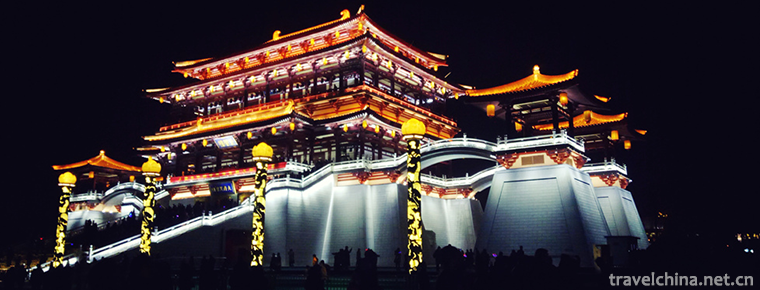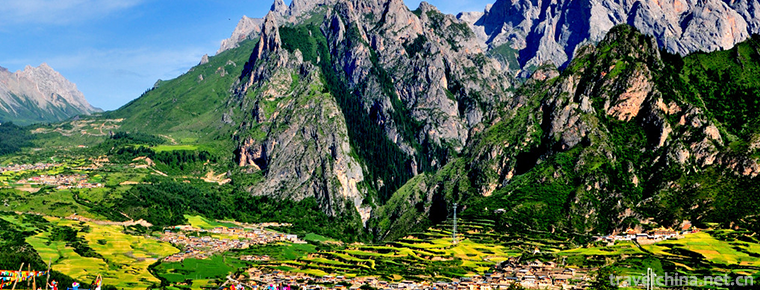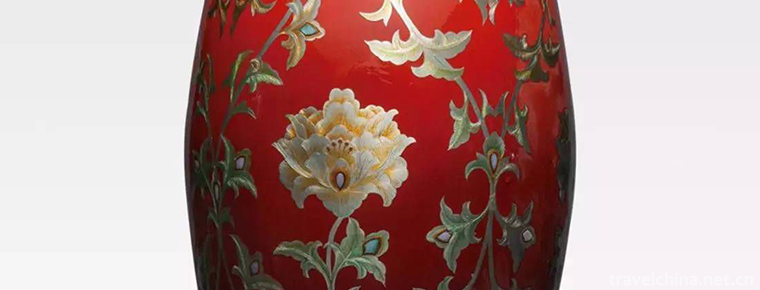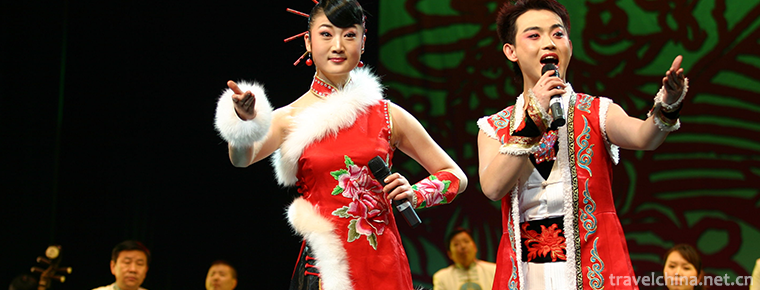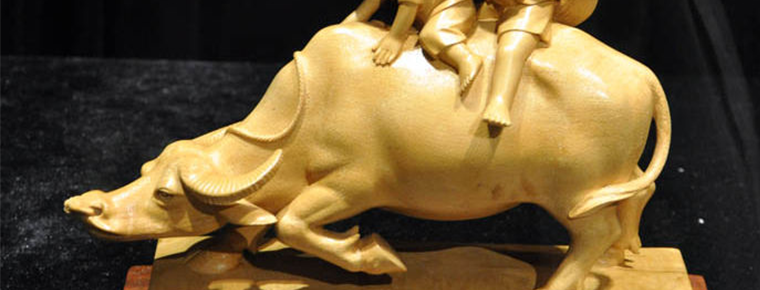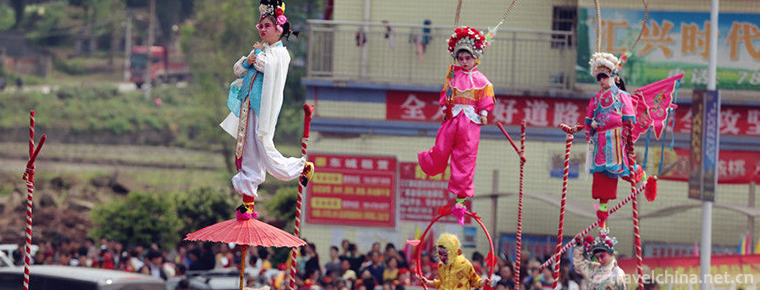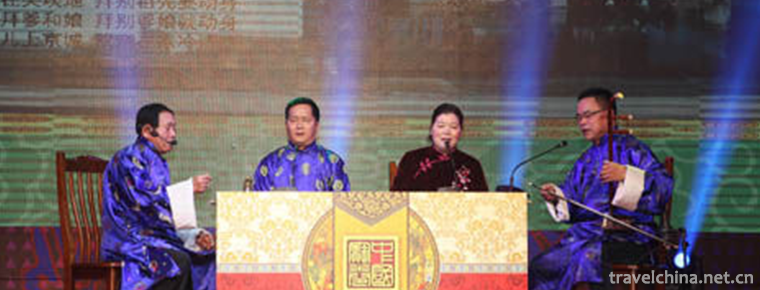Legend of Wang Zhaojun
Legend of Wang Zhaojun
Wang Zhaojun's legend is one of the local folklores in Xingshan County, Hubei Province. Wang Zhaojun, one of the four beautiful women in ancient China, is the embodiment of beauty, the messenger of peace and the symbol of national unity. His historical achievements and social evaluation rank first among the four beautiful women. Wang Zhaojun said that "harmony" and "beauty" are the spiritual core. It originated in Xingshan, Wang Zhaojun's hometown, and spread all over Inner Mongolia, radiating north and South and even the whole country, influencing and even reaching overseas. It is a form of folk literature passed down orally.
In June 2008, the legend of Wang Zhaojun declared by Xingshan County of Hubei Province was listed in the second batch of national intangible cultural heritage list with the approval of the State Council.
historical origin
Wang Zhaojun's original name is Wang Zhaojun. Zhaojun is her word. During the Western Han Dynasty, she was born in a civilian home near Xiangxi River in Xingshan County, Hubei Province. She was one of the four beautiful women in ancient China. Zhaojun is diligent and kind, loves his motherland and opposes war. During the reign of Emperor Han and Yuan Dynasty, Zhaojun was elected to the Han Palace because of his outstanding talent. She was elected to the palace in the Yuan Emperor of the Western Han Dynasty. The biography of the Southern Huns in the Book of the Later Han Dynasty is also recorded: "Zhaojun Zizhao, Nanjun people also. At the beginning of the Yuan Dynasty, he was elected to Yeting by his good family. In Wang Zhaojun's rare historical materials, the word "Liangjiazi" was found as her origin. According to the historical records, Liangjiazi was not a "doctor, witch, businessman, hundred workers" low-down person. Therefore, Wang Zhaojun in Maolin Xiuzhu, mountain water color, in the parents, care and pity, regardless of whether there is at home, to maintain his face, proficient in folk art, elegant temperament, delicate and refined.
primary coverage
The Legend of Zhaojun's Birth
Folk legend, Wang Zhaojun's mother, 40 infertility, one day into the temple to pray for God, night, dream of a bright moon into the arms, soon born Wang Zhaojun.
Therefore, Wang Zhaojun has the name of Haoyue. He collects the gentle atmosphere of the earth and the gentle landscape. He shares the same color with mountain streams and empty moonlight. Wang Zhaojun was in the 28th year, as if you were an independent orchid, and accepted into the palace. At that time, during the twentieth and eighth years, there were naturally many delineations in our hearts, but the Hou Gong and Shuo Mo were just opportunities in life. "Three thousand miles in the old country, twenty years in the deep palace." Entering the palace for a small woman, after joy, has a bosom of confusion. Because I have never seen the face of the Yuan Emperor, let alone the favor of the Emperor.
Legend of Pingsha Falling Yan Zhaojun
In the first year of Jingning, the Emperor of Han and Yuan Dynasty, Hu Hanxie, the leader of the Huns, went to Chang'an to see the Emperor of Han and Yuan Dynasty. The court of the Han Dynasty welcomed him solemnly and had a very harmonious relationship. Hu Hanxie said that he was willing to be the son-in-law of the Han family and to be reconciled. Emperor Yuan happily agreed. At this time, Wang Zhaojun, who had not seen the Yuan Emperor once, heard the news and offered to act as a relative. In order to appease the Northern Huns, Emperor Han and Yuan agreed to marry Zhaojun and Shanyu, so as to make peace between the two countries forever. On a crisp autumn day, Zhaojun took his Pipa with him. With the old Huhan Xie Shanyu, he walked outside the Yellow Sands, and Zhaojun said goodbye to his native land and went to the North Desert. All the way to Huangsha Gun
Rolling, hissing goose, tearing her heart and liver; sad feeling, making her mood difficult to calm. On her mount, she plucked the strings and played a solemn farewell song of "Out of the Fortress". The wild geese flying south heard the sad and melodious sound of the piano and looked at the amazing woman riding on the horse. They forgot to wave their wings and fell on the flat sand one after another. From then on, "Pingsha Falling Wild Goose" became the world's best song. Zhaojun came to be the representative of "falling goose". After Wang Zhaojun arrived in Hun, he was named Ninghu Yong clan and began to live in a foreign country.
Wang Zhaojun gave birth to a son, known as Itu Wise Dentist, who became king by the day. However, in the first two years, after a short marriage life, Hu Han-xie died alone, when Wang Zhaojun was twenty-four years old. A woman in the Central Plains used to goat milk in Hu land, used to be used to yurt, learned to ride a horse to shoot a pig, and learned some Hu language. According to the custom of the Huns, Wang Zhaojun remarried to the new successor, Huhan Xie's eldest son, and Tao Mogao's eldest son, who had more than one plant, and then gave birth to two daughters. The eldest daughter, Yun, was in the second place, and the youngest daughter was in the second place. More than ten years later, Wang Zhaojun died with Yanxian.
Inheritance Significance
Wang Zhaojun, one of the four beautiful women in ancient China, is the embodiment of beauty, the messenger of peace and the symbol of national unity. His historical achievements and social evaluation rank first among the four beautiful women. "Legend of Wang Zhaojun" takes "harmony" and "beauty" as its spiritual core. It originated in Xingshan, Wang Zhaojun's hometown, and spread all over Inner Mongolia, radiating north and south, even across the country, influencing and even reaching overseas. It is a popular form of folk literature, which has a history of more than 2,000 years. It has evolved and supplemented with Zhaojun's historical facts and its related manifestations, such as ruins, architecture, literature, drama, painting and calligraphy, music, dance and modern movies, television, folk customs, trademarks, etc., which together constitute the unique connotation of Zhaojun's culture. It is the mother and foundation of Zhaojun's culture. It has extremely valuable literary, historical, aesthetic and humanistic values. 。
Current situation of inheritance
Wang Zhaojun's legend is mainly distributed in the Xiangxi River Basin, Shennongjia, Zigui and other surrounding areas in Xingshan. In the context of time, it can be divided into four categories: the legend of living in home before the age of sixteen, the legend of selecting a concubine after entering the palace, the legend of returning to the hometown and provincial relatives before leaving the fortress, and the legend of their relatives after leaving the fortress. From the content, it can be divided into legend of characters, legend of place names, legend of folklore and legend. With the gradual change of production and lifestyle, the increasing change of social system, the successive death of folk artists, the violent impact of foreign culture and the impact of migration, the ecological environment and living space of Zhaojun legend have been destroyed and are gradually declining.
The legendary endangerment of Wang Zhaojun has attracted great attention of the Xingshan County Committee and the county government. In 2003, the theme report of the Eleventh Congress of the Communist Party of China Xingshan County clearly put forward: "actively excavate and sort out Zhaojun culture, folk culture, salvage protection of folk cultural resources, cultivate and improve cultural demonstration villages with strong local characteristics, such as Lianglian Village, Shange Village, Shudu Village, Weigu Village. "Since 2004, the county has taken a series of protective measures. Six documents were issued successively, such as the Notice of Establishing Leading Group for the Protection of Excellent Folk Cultural Heritage in Xingshan County and the Notice of the Protection Plan for the Intangible Cultural Heritage in Xingshan County, which provided a strong institutional and organizational guarantee for the rescue, protection and inheritance of Wang Zhaojun's legend. In 2005, the propaganda and Culture Department of Xingshan County established folk cultural associations in eight townships throughout the county. In September 2006, the Propaganda Department of Xingshan County Committee and the County Cultural Bureau jointly named Zhaojun Village and Chenjiawan Village in Gaoyang Town, and Baiyangzhai Village in Nanyang Town as "Wang Zhaojun Legend Village", which played a good role in demonstrating the inheritance and protection of Wang Zhaojun Legend. Some folk literature and Zhaojun culture enthusiasts in this county worked hard to collect and organize Wang Zhaojun's legend village. There are 13 bibliographies of Jun Legend, which form a fist product with heavy weight.
Taking the opportunity of declaring the provincial intangible cultural heritage list, Xingshan County of Hubei Province has carried out a series of rigorous investigations, excavations and sorting out the legend of Wang Zhaojun, a folk literature category of intangible cultural heritage. This indicates that the rescue and protection of Wang Zhaojun's legend is facing new development opportunities. In this work of declaring the list of provincial intangible cultural heritage, the special class of Cultural Department of Xingshan County once again carried out the largest investigation, groping, excavation and collation of Wang Zhaojun's legend in its historical evolution, distribution area, genealogy, manifestation and cultural connotation since the 1980s. A total of more than 300 folk artists were surveyed and Wang Zhaojun's legend heirs 4 were interviewed. More than 10 people have collected more than 20 hours and more than 10 video cassettes of audio and video materials of key artists, sorted out more than 2 million words of text materials, and taken more than 500 artists'photos, thus obtaining a large number of precious and detailed first-hand information.
The Xingshan County Committee, the county government and the propaganda and cultural departments have also issued a protection plan for the next five years. Eight protection measures have been formulated to ensure the inheritance and promotion of this precious folk culture, including the establishment of Wang Zhaojun's legendary resources database and literature and material exhibition room, the establishment of Wang Zhaojun's legendary cultural ecological protection zone, and the compilation of a set of local curriculum and teaching materials for Wang Zhaojun's legend.
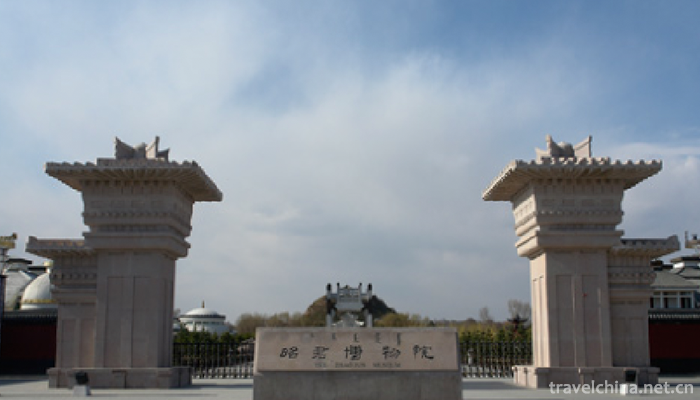
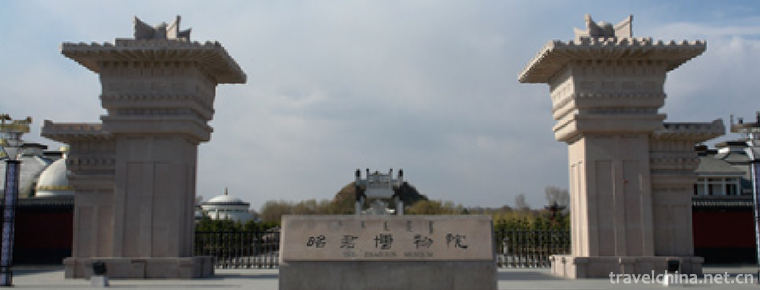
Legend of Wang Zhaojun
-
Sliced Fish in Hot Chili Oil
Boiled fish, also known as river boiled boiled fish and boiled fish fillet, was first popular in Cui Yun Township, Yubei District, Chongqing.
Views: 266 Time 2018-10-27 -
Crab congee
crab porridge is a snack in Macao. Macao is located at the junction of saltwater and fresh water, and the crab produced is delicious. Water crab porridge...
Views: 233 Time 2018-10-31 -
KulangsuGulangyu Islet
Gulangyu, formerly known as "Yuanshazhou", alias "Yuanzhouzi", was appointed "Wulongyu" in the Southern Song Dynasty and renamed
Views: 163 Time 2018-11-11 -
Dayan Pagoda Datang Furong Garden Scenic Area
The Furong Garden of the Tang Dynasty is located in Qujiang Development Zone in the south of Xi'an City, Shaanxi Province, on the southeast side of the Big Wild Goose Pagoda.
Views: 188 Time 2018-12-12 -
Yellow River First Beach
Views: 185 Time 2018-12-22 -
Devil City
The Devil City is also known as the Wind City of Urho. Wuerhe Mining Area in the lower reaches of Jiamu River, located in the northwest margin of Junggar Basin
Views: 109 Time 2019-02-07 -
Chengdu lacquer art
Chengdu lacquer art, the traditional handicraft of Chengdu City, Sichuan Province, is one of the national intangible cultural heritage.
Views: 182 Time 2019-04-18 -
Song and dance duet
Errentai is commonly known as Dual Items, two classes. Originated in Shanxi and growing up in Inner Mongolia, it is a traditional opera popular in the central and Western Inner Mongolia Autonomous Reg
Views: 148 Time 2019-04-29 -
Boxwood carving
Boxwood carving is one of the traditional folk carving arts in Zhejiang Province. It uses boxwood as carving material and uses the natural form of boxwood, which is smooth, delicate in texture and sol
Views: 180 Time 2019-05-04 -
Sanhui Pavilion Club
Sanhui Caiting Pavilion is a local traditional folk cultural activity that performs in streets or squares on March 16-18 of the lunar calendar every year. Its artistic form of performance is ingenious
Views: 140 Time 2019-06-12 -
Shaoxing Xuanjuan
Shaoxing Xuanjuan is a traditional rap art with religious color, which is mainly used to worship gods and pray for blessings. Since Tang Dynasty, it has developed into folk art in Qing Dynasty. The So
Views: 197 Time 2019-06-14 -
guangan medical and health work
As of 2019, there are 3443 health institutions in Guang'an City. Among them, there are 79 hospitals, 174 health centers, 24 community health service centers (stations), 379 clinics, clinics and clinics, 2 blood collection and supply institutions, 7 matern
Views: 339 Time 2020-12-19



